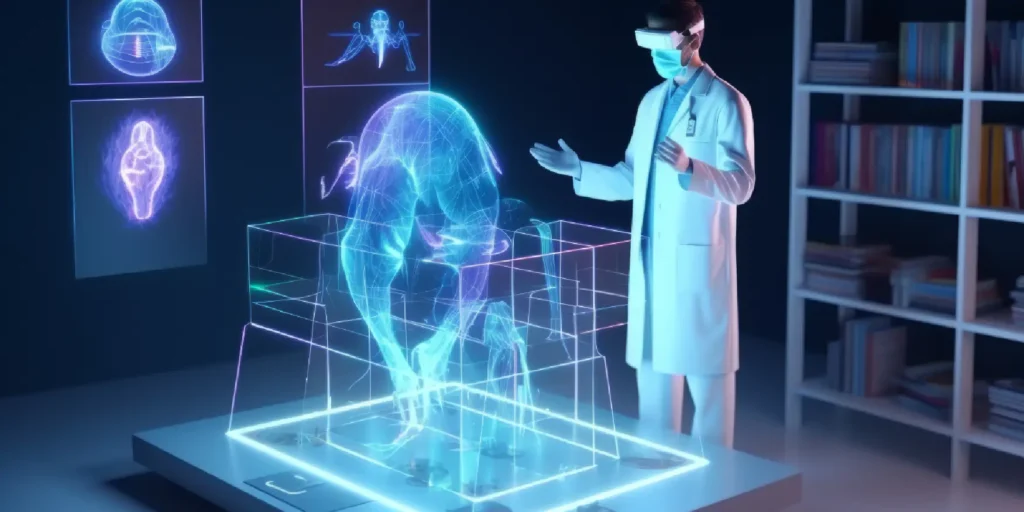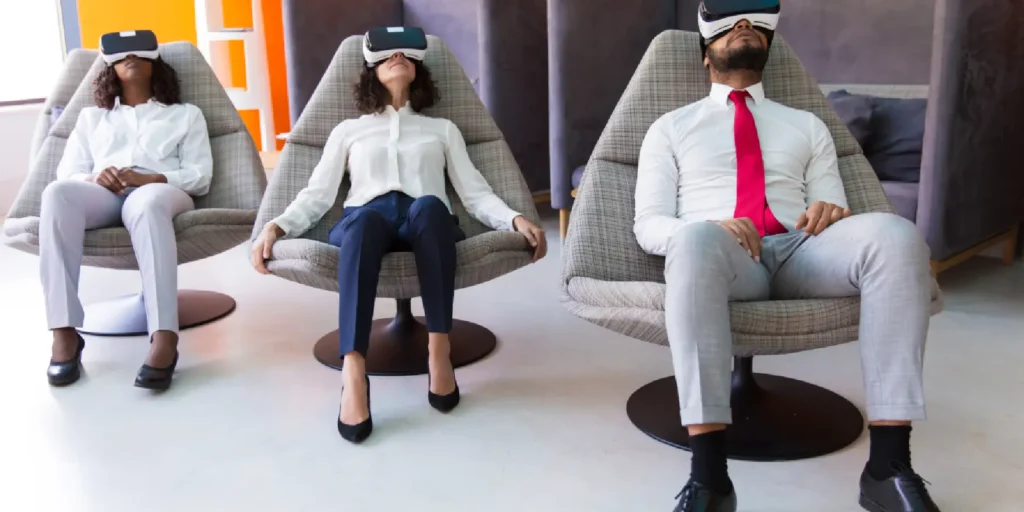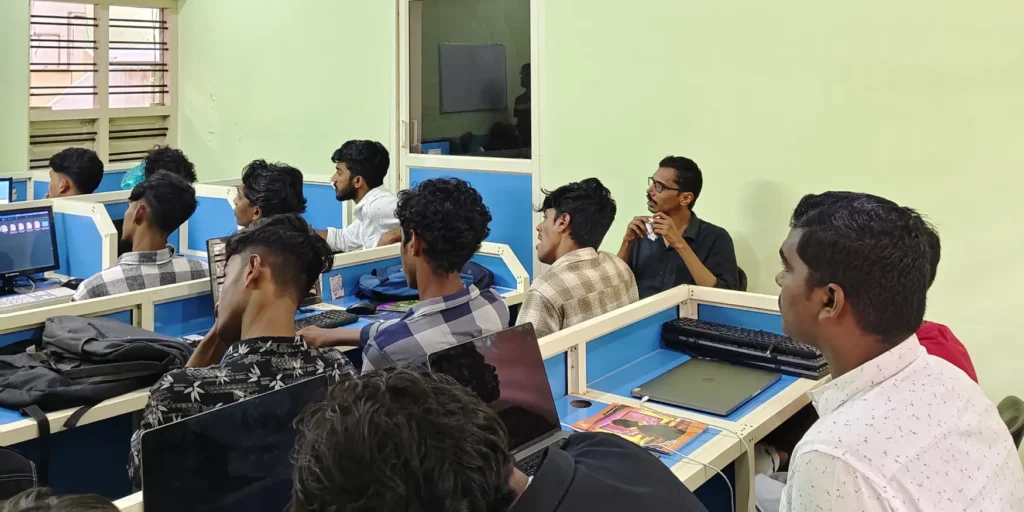Table of Contents
Introduction:
The digital transformation wave is sweeping across industries, with Augmented Reality (AR) and Virtual Reality (VR) at the forefront. These technologies are not only redefining existing processes but are also paving the way for new business models and opportunities. The term “AR VR industry transformation” encapsulates this shift, highlighting a trend that’s becoming increasingly relevant across sectors such as healthcare, education, retail, real estate, and more. As companies continue to embrace these innovations, the potential for reshaping industry standards and consumer expectations skyrockets, setting a new benchmark for technological integration.
Moreover, the acceleration in AR and VR adoption can be attributed to their ability to blend the digital and physical worlds in ways that were once the domain of science fiction. This seamless integration enhances the user experience, providing more immersive, intuitive, and personalized interactions. From virtual try-ons in retail to complex surgical training in healthcare, AR and VR are not just enhancing user experiences—they are revolutionizing entire operational frameworks within industries. This blog explores how AR and VR are reshaping these industries, offering insights into their profound impact and the future possibilities they hold.
Transforming Healthcare with AR and VR
Healthcare is undergoing a radical transformation thanks to AR and VR technologies. Surgeons are using AR to overlay critical information like CT scans and MRI data directly onto their patients during operations, enhancing precision and reducing surgery time. An example of this is at the Cleveland Clinic, where AR-assisted surgeries have led to improved outcomes in complex procedures.
VR takes patient care beyond traditional settings by offering pain management solutions and rehabilitation. Programs like “Firsthand Technology VR” provide immersive environments that help manage pain for burn victims during dressing changes, significantly reducing the need for opioids.
Further, AR and VR are instrumental in training healthcare professionals. Using VR platforms, medical students can experience lifelike simulations of emergency scenarios, from cardiac arrests to fractures, allowing them to practice their response in a controlled yet realistic setting.

Revolutionizing Education through Immersive Technologies
Education systems worldwide are leveraging AR and VR to transform traditional learning paradigms. By integrating AR, textbooks and classroom materials become interactive, making learning more engaging and accessible. For example, the AR app “Anatomy 4D” turns diagrams of human organs into three-dimensional models that students can explore from all angles.
VR’s impact is equally significant, especially in distance learning. Platforms like “Engage” let educators host virtual classes where students can interact with each other and the learning material in a fully immersive setting, making education more accessible, especially during times like the COVID-19 pandemic.
These technologies also extend to special education, where tailored VR experiences help students with disabilities by creating learning modules that cater to their specific needs, thus democratizing education. For example, the AR app Anatomy 4D turns diagrams of human organs into three-dimensional models that students can explore from all angles.
Redefining Retail with AR and VR
In retail, AR and VR are enhancing the shopping experience by merging the convenience of online shopping with the assurance of in-store purchases. AR apps like “Warby Parker’s Virtual Try-On” allow customers to see how different eyeglasses look on their faces through their mobile devices before making a purchase decision.
VR, on the other hand, transforms how consumers interact with brands. For instance, Audi’s VR experience lets customers configure their car and experience it in various environments, providing a deeper connection to the product before stepping into a dealership.
Moreover, VR and AR are revolutionizing marketing within retail, offering novel ways for brands to engage with consumers through immersive advertising campaigns that are memorable and interactive.
AR and VR in Real Estate and Construction
The real estate and construction industries are also capitalizing on the benefits of AR and VR. AR apps enable potential buyers to visualize their future homes with virtual furniture and decor, helping them make informed purchasing decisions. A standout example is the “Magicplan,” which uses AR to create and view floor plans on mobile devices.
VR takes this a step further by offering virtual tours of properties, which is especially useful for international or remote buyers. Companies like “Matterport” provide detailed 3D walkthroughs of real estate listings, making properties accessible from anywhere in the world. For example, A standout example is the Magicplan, which uses AR to create and view floor plans on mobile devices.

Future Prospects of AR and VR in Business
As Augmented Reality (AR) and Virtual Reality (VR) technologies continue to mature, their transformative impact is expected to deepen across the business landscape. What was once novel technology is swiftly becoming a vital component in the toolkit of innovative companies. These tools are not just enhancing current business models; they are also paving the way for new ones, enabling companies to solve old problems in new ways and create value in unprecedented manners.
One of the most promising aspects of AR and VR is their potential to standardize high-quality training across geographically and culturally diverse environments. For instance, VR training simulations can be deployed globally, ensuring that employees in different parts of the world receive the same training experience and learn through a highly interactive and engaging medium. This standardization is crucial for multinational corporations seeking uniformity in training and operational practices.
Additionally, AR is revolutionizing support and maintenance in industries like manufacturing and utilities. With AR glasses or devices, technicians can receive real-time information and visual aids overlaid on the equipment they are repairing, reducing error rates and training time. This application is not just a theoretical possibility but is already being implemented by companies like Boeing and GE, who use AR to enhance the precision and efficiency of their operations.
Conclusion
The impact of AR and VR on industry transformation is profound and enduring. These technologies offer significant advantages by enhancing efficiency, improving customer engagement, and creating new opportunities for growth. The ongoing evolution of “AR VR industry transformation” is not only exciting but also essential for businesses looking to thrive in a digitally-driven future. As the technology becomes more sophisticated and accessible, it will likely penetrate deeper into sectors that have yet to fully capitalize on its potential, marking a new era of industrial innovation.
Furthermore, the journey of integrating AR and VR into business operations is an ongoing adventure. As more enterprises adopt these tools, they pave the way for others to follow, creating a ripple effect that benefits entire industries. Companies that remain at the forefront of this technological revolution will likely find themselves leading the charge, reaping the rewards of innovation and sustainability. Therefore, staying informed and adaptable is crucial for any business aiming to leverage the transformative power of AR and VR technologies. For those looking to enhance their expertise or venture into this exciting field, exploring AR VR courses in Kochi can be a vital step. Embrace these changes, and you may well set your company apart as a pioneer in the next wave of industry evolution.

